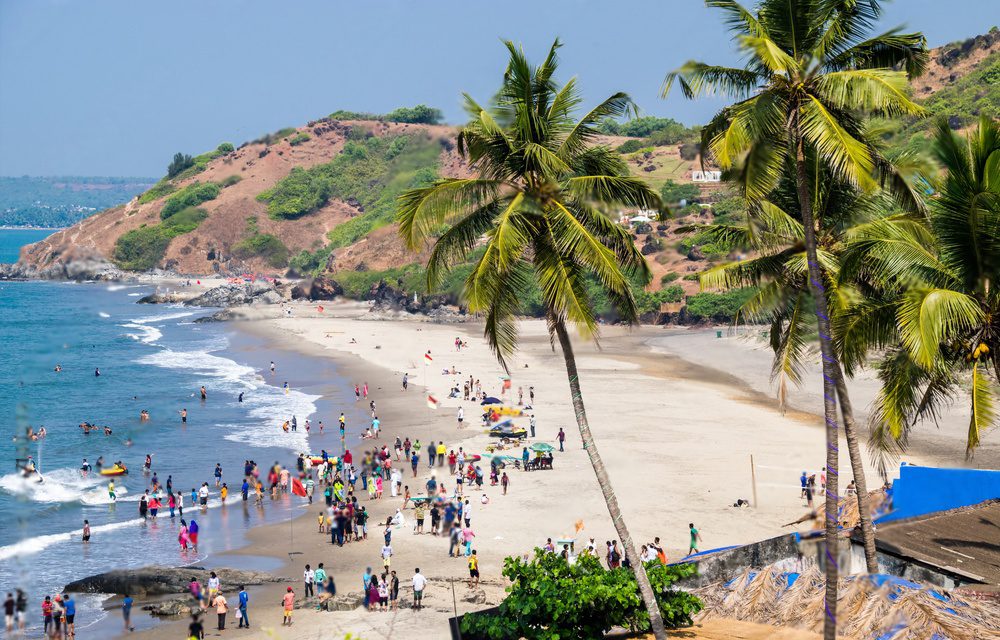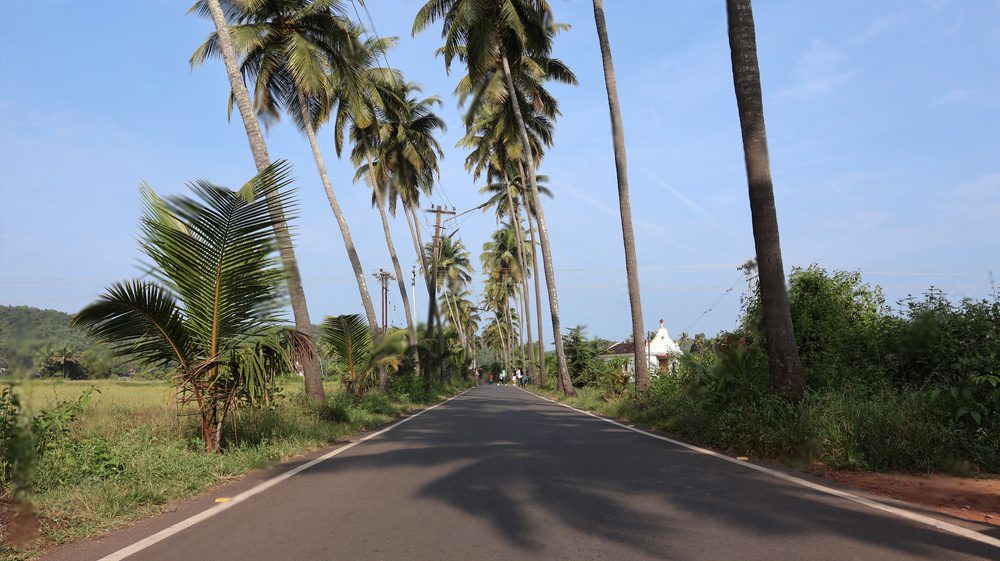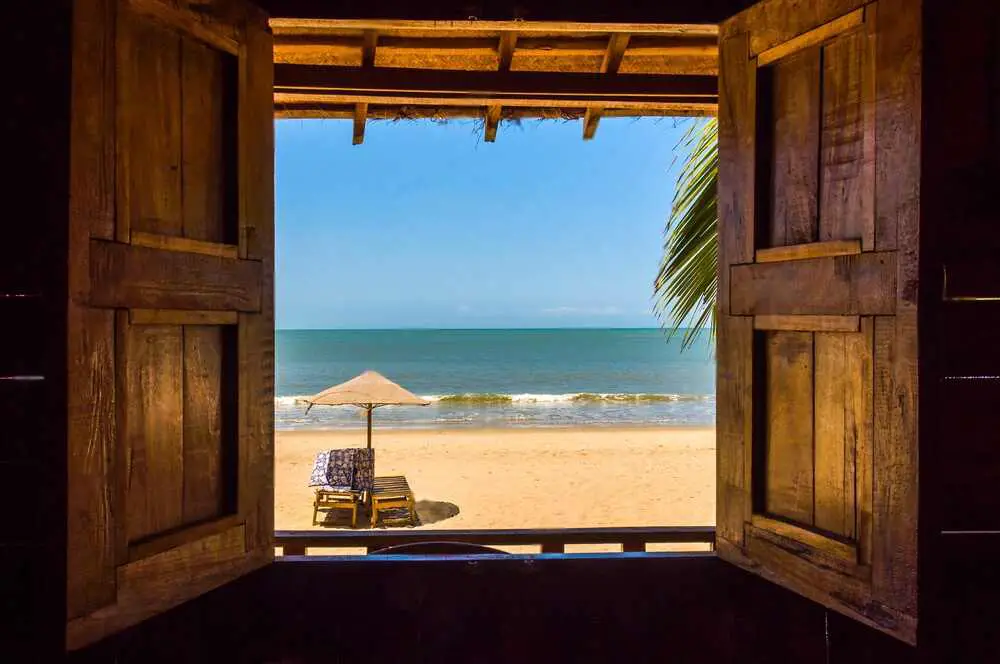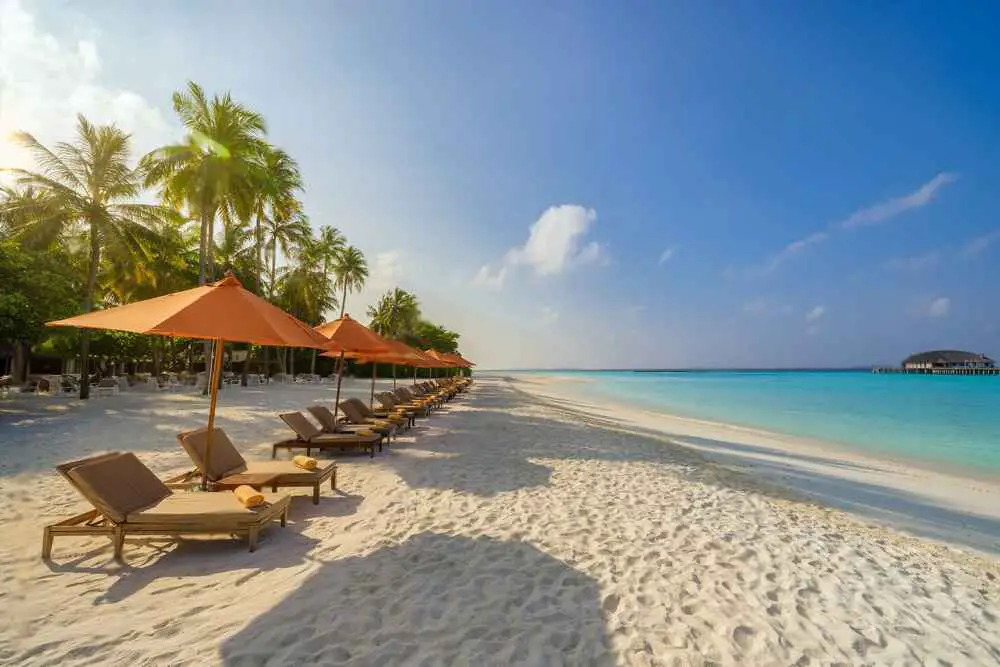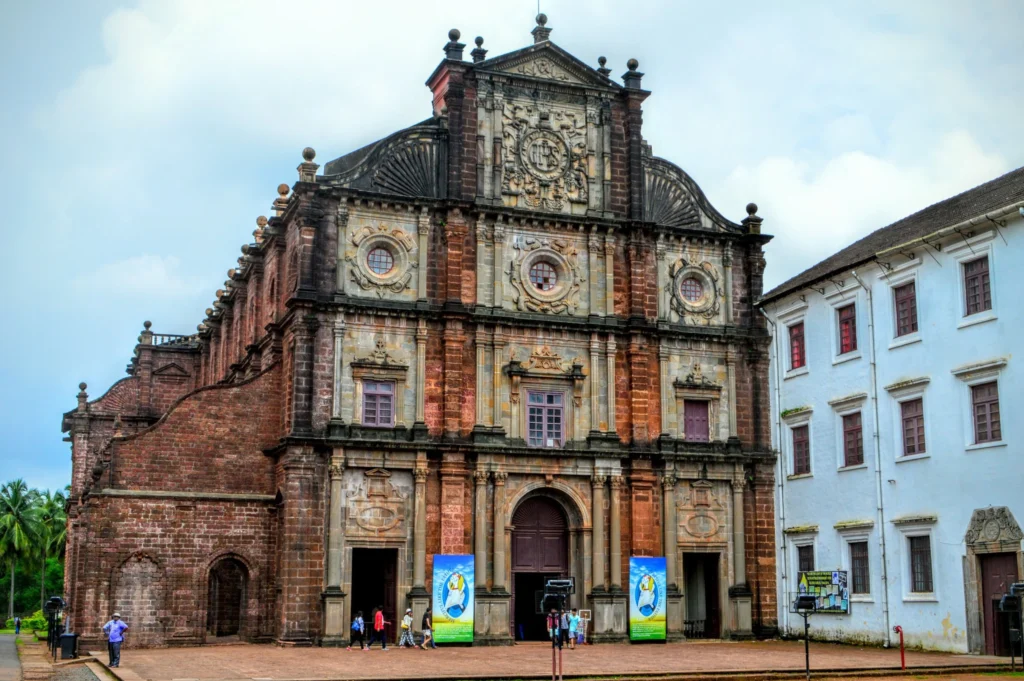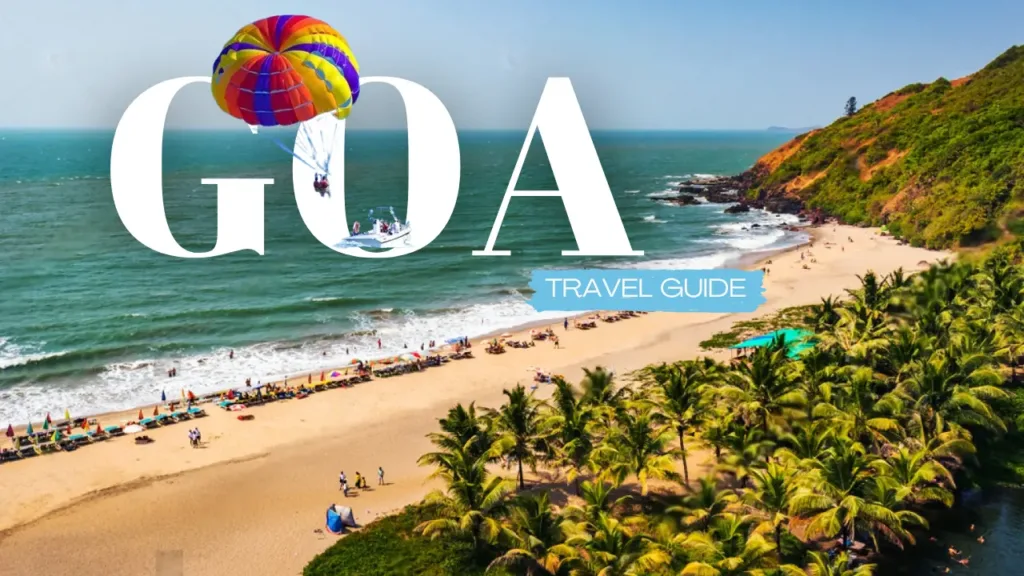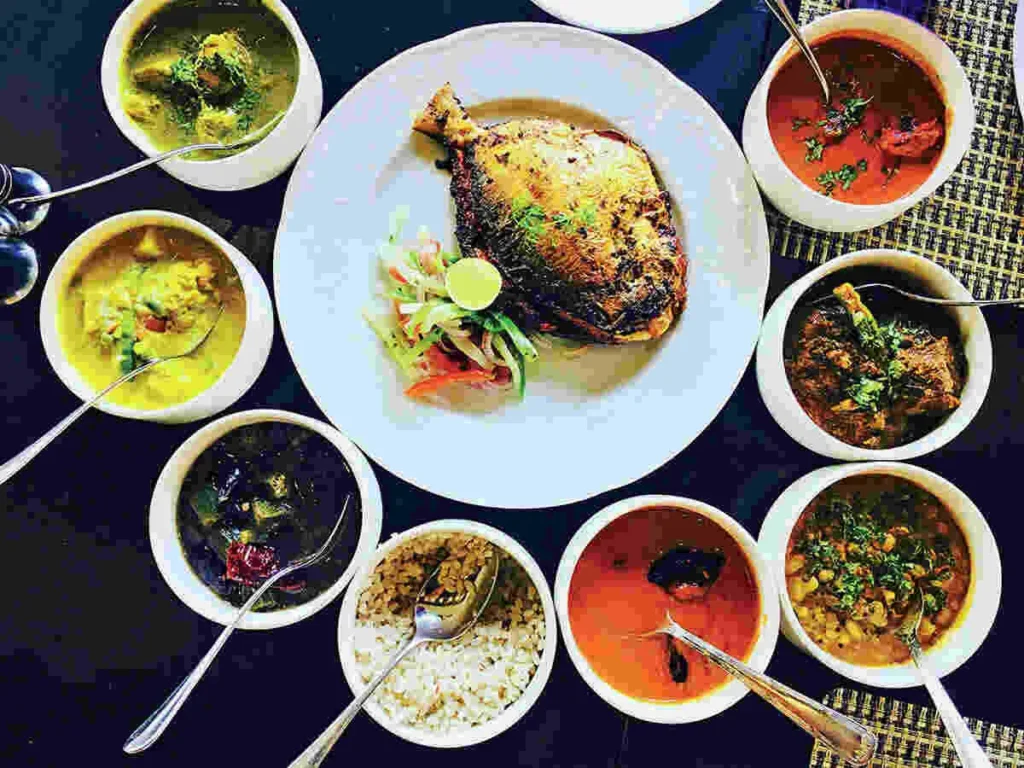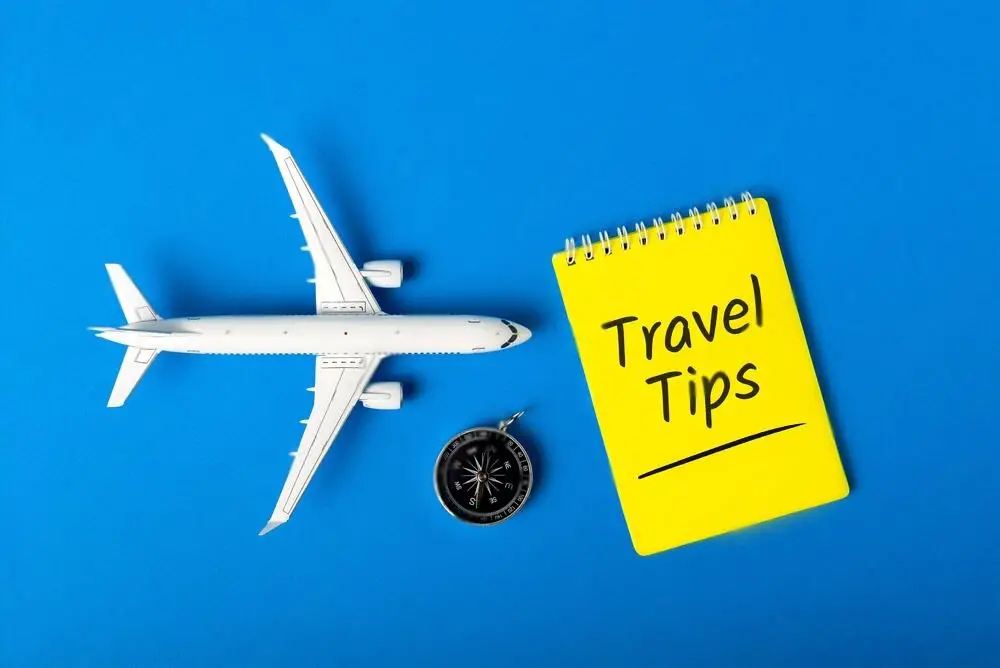Brace yourself for the vibrant chaos that is Mumbai, India’s beating heart! This “City of Dreams” isn’t for the faint of heart. It’s a sensory overload in the best way possible, a whirlwind of ancient traditions and modern innovation.
Picture the iconic Gateway of India, a majestic sentinel by the Arabian Sea, whispering tales of Mumbai’s rich past. Weave through the vibrant stalls of Colaba market, overflowing with treasures, or lose yourself in the timeless charm of Fort, a district where history lingers on every cobbled street. Mumbai thrives on these captivating contrasts, offering something for every explorer. This dynamic city pulsates with the energy of Bollywood, India’s dazzling film industry. It’s the financial powerhouse of the nation, a melting pot of cultures, languages, and of course, incredible food. Whether you’re here for the star-studded glamour, the architectural wonders, or the legendary street food scene, Mumbai has something to ignite your senses.
How to reach:
Taking Flight:
- Chhatrapati Shivaji Maharaj International Airport (CSMIA): As a major international hub, CSMIA boasts connections to global cities and numerous domestic flights from airlines like Air India and IndiGo, ensuring easy access from anywhere in India.
- Reaching the City: The airport is roughly 20 kilometers from the city center. Taxis, app-based cabs, and the Mumbai Suburban Railway Network provide convenient transportation options.
Railway Arrival:
- Mumbai Suburban Railway: Mumbai boasts several key railway stations, including Chhatrapati Shivaji Maharaj Terminus (CSMT), Mumbai Central, and Bandra Terminus. These stations connect Mumbai to all major Indian cities and towns.
- Long-Distance Trains: Renowned trains like Rajdhani Express and Shatabdi Express offer swift connections to major Indian cities.
- Booking Tickets: Secure your train tickets online or directly at railway stations.
Road Trip to Mumbai:
- National Highways: A network of national highways connects seamlessly to Mumbai. Key routes include NH48 to Delhi, NH66 to Goa and Mangalore, and NH160 to Nashik.
- Bus Services: Numerous state-run and private bus operators offer services to and from Mumbai. Choose from luxury coaches, sleeper buses, or standard buses depending on your budget.
- Self-Driving: If you prefer to drive, Mumbai is accessible via well-maintained highways. However, be prepared for heavy traffic upon entering the city.
Traveling by Sea:
- Ferry Services: Explore Mumbai’s connection to nearby coastal towns and islands via ferry services. The popular tourist route from Gateway of India to Elephanta Island is a must-do. Additionally, ferries to Alibaug and Mandwa offer scenic journeys for those exploring Maharashtra’s coastline.
Best time to visit:
Winter:
Winter in Mumbai unfolds like a tourist’s dream. Comfortable weather beckons you outdoors, whether it’s for a stroll past the iconic Gateway of India or a delve into history at the Elephanta Caves. Walking tours come alive during this season, and the festive spirit soars with Diwali, Christmas, and New Year celebrations. Art enthusiasts can’t miss the Kala Ghoda Arts Festival, a vibrant explosion of creativity.
Monsoon:
Monsoon brings a lush transformation to Mumbai. While heavy rainfall might disrupt travel plans, the city takes on a unique charm. The coastline boasts scenic beauty, and nearby hill stations offer a cool escape. The monsoon coincides with Ganesh Chaturthi, a festival celebrating Lord Ganesha with vibrant processions and colorful decorations.
Summers:
Mumbai summers are best suited for the heat tolerant. Soaring temperatures and high humidity make outdoor activities less appealing, except for perhaps early mornings or evenings. Explore the city’s numerous indoor offerings like museums, art galleries, and shopping malls. Holi, the festival of colors, takes place in March, offering a glimpse into vibrant celebrations – just be prepared to get splashed with color.
Attractions:
Chhatrapati Shivaji Maharaj Terminus:
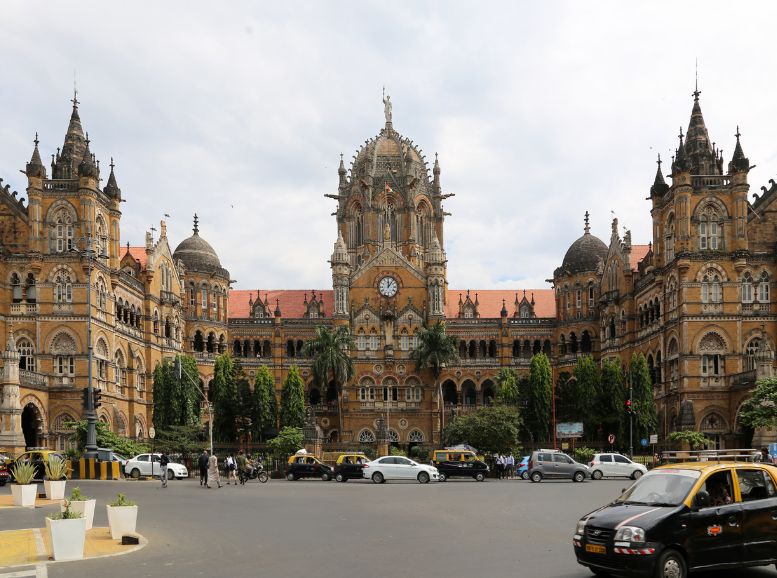

Step back in time and marvel at Chhatrapati Shivaji Maharaj Terminus, or CST as it’s fondly called by locals. This UNESCO World Heritage Site isn’t just a railway station; it’s a captivating architectural marvel that whispers tales of Mumbai’s colonial past.
Built in 1888, CST is a breathtaking fusion of Victorian Gothic Revival architecture, intricately blended with Indian influences. Originally named Victoria Terminus after Queen Victoria, it was later renamed to honor the legendary Maratha king, Chhatrapati Shivaji. Look up and be awestruck by the ornate turrets, soaring pointed arches, and vibrant stained-glass windows – a testament to the era’s engineering and design mastery.
Marine Drive:
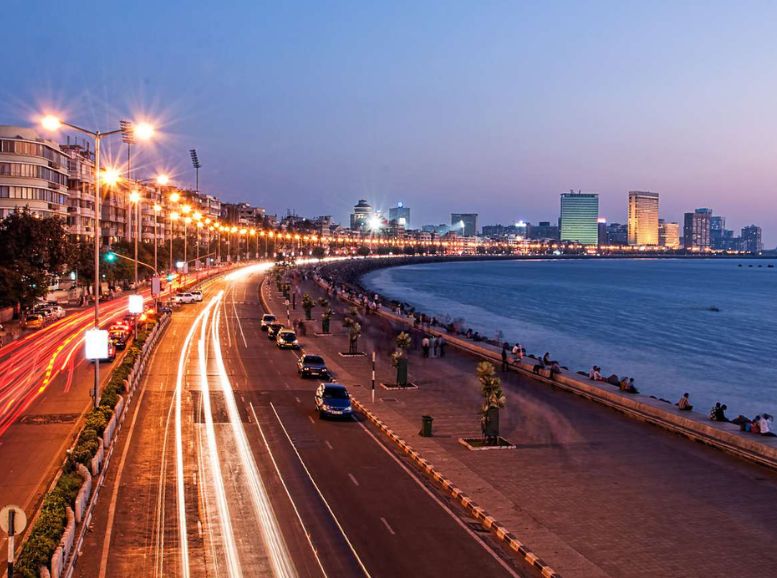

Unveiling the crown jewel of Mumbai, Marine Drive – a 3.6-kilometer boulevard fondly nicknamed the “Queen’s Necklace.” This scenic C-shaped route gracefully curves along the South Mumbai coast, offering an experience that transcends a mere road. Imagine strolling along wide, well-maintained sidewalks, the Arabian Sea shimmering beside you. Breathe in the cool sea breeze as you walk, jog, or simply soak in the vibrant hues of the day. But the true magic unfolds when the sun dips below the horizon.
Marine Drive transforms into a breathtaking spectacle. Streetlights flicker to life, transforming the road into a sparkling necklace against the night sky. Art deco buildings flank the promenade, whispering tales of Mumbai’s architectural heritage.
Colaba Causeway:
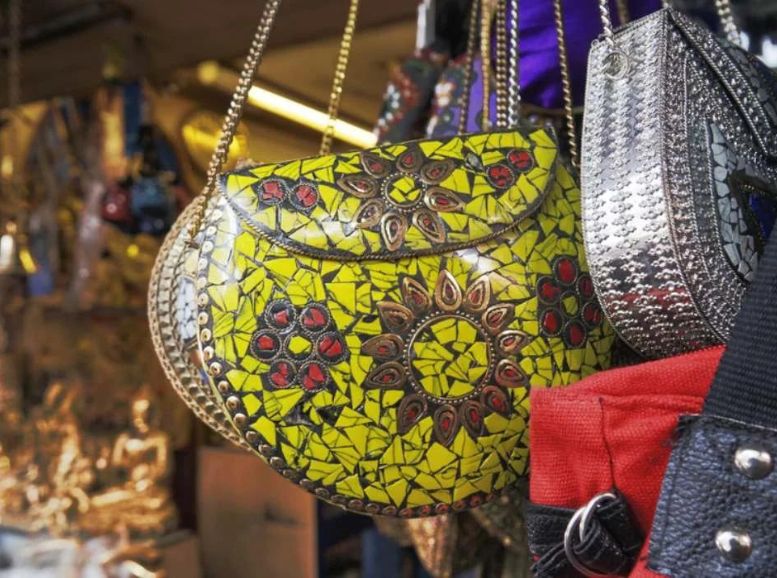

Dive headfirst into the electrifying energy of Colaba Causeway, Mumbai’s pulsating street market paradise. Nestled in the heart of South Mumbai, this kilometer-long stretch is a sensory overload in the best way possible.
Imagine a treasure trove overflowing with trendy clothes, eye-catching accessories, unique souvenirs, and antique gems – all at your fingertips. But Colaba Causeway offers more than just shopping; it’s a cultural kaleidoscope. The air vibrates with the energy of enthusiastic bargaining, friendly shopkeepers, and the excited chatter of a melting pot of locals and tourists.
Haji Ali Dargah:
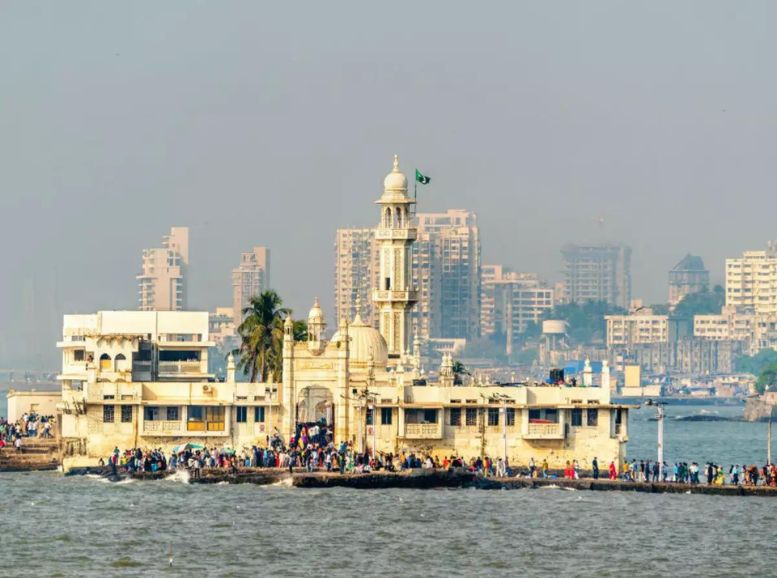

Unveiling Mumbai’s spiritual gem, the Haji Ali Dargah – a landmark where serenity meets reverence. This 1431 mosque and tomb sits on a small Arabian Sea islet, a short distance from Worli’s coast. Accessible by a causeway that dances with the tides, the dargah beckons devotees and visitors alike.
Dedicated to Pir Haji Ali Shah Bukhari, a wealthy merchant who embraced spirituality, the dargah’s origins are shrouded in legend. Tales speak of his casket miraculously floating to this very spot after his pilgrimage to Mecca.
Siddhivinayak Temple:
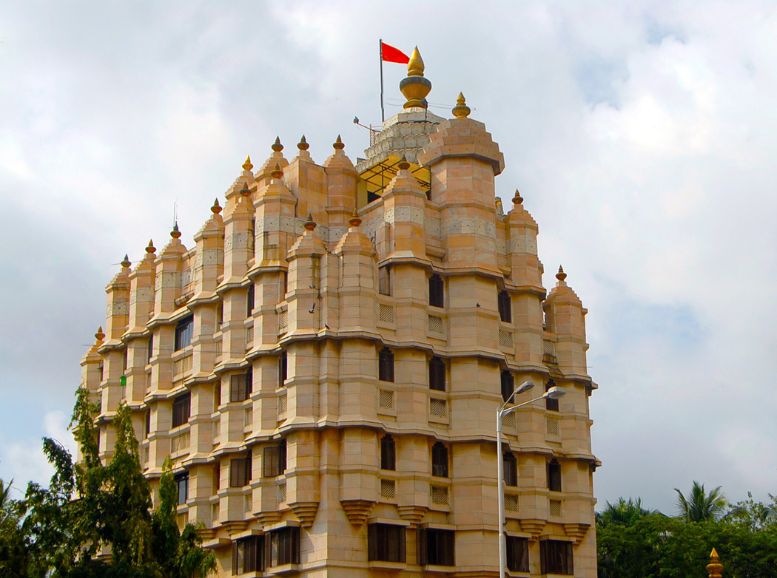

Unveil the heart of Mumbai’s devotion – the Siddhivinayak Temple. This iconic landmark, dedicated to Lord Ganesha, the beloved elephant god, transcends a place of worship; it’s a vibrant tapestry of culture and spirituality.
Built in 1801, the temple’s story begins with a humble vision by Laxman Vithu and Deubai Patil. Over time, it transformed into a grand complex, a testament to the enduring faith of millions who visit each year. The main draw is Lord Ganesha himself, revered here as Siddhivinayak, the “Ganesha who grants your wish.” The idol is unique, with its right-tilted trunk – a rare and powerful form believed to bring special blessings.
Juhu Beach:
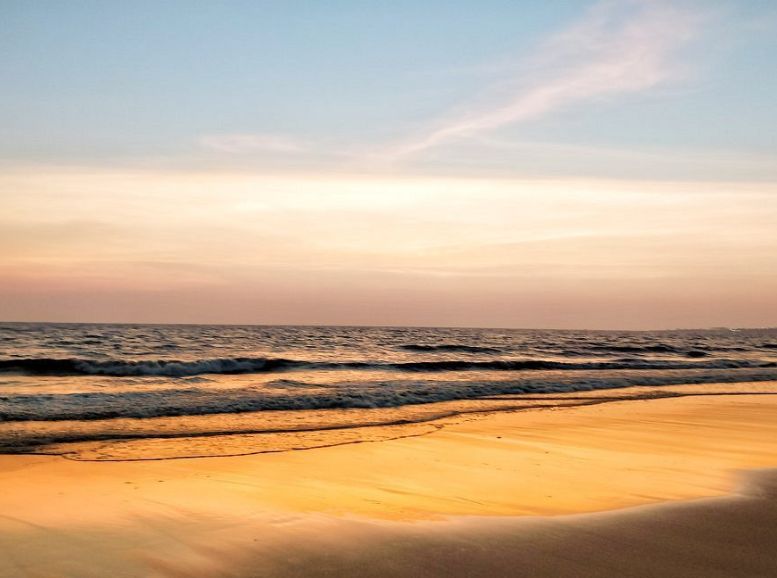

Juhu Beach, Mumbai’s vibrant sprawl of sand and city energy. This six-kilometer crescent of Arabian Sea coastline isn’t just a beach; it’s a playground for the senses.
Imagine evenings bursting with life. Families picnic on the shore, friends share laughter and games, couples steal romantic moments – all embraced by the cool sea breeze. The aroma of Mumbai’s iconic street food fills the air, with vendors tempting you with piping hot pav bhaji, tangy bhel puri, and the comforting goodness of vada pav. Watch the sun dip below the horizon, painting the sky in a breathtaking tapestry of orange and pink – a fiery farewell that will linger in your memory.
Sanjay Gandhi National Park:
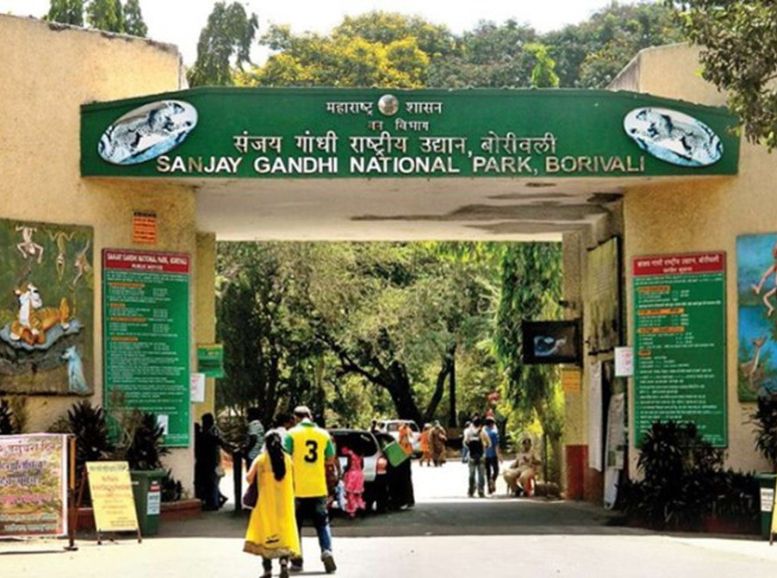

Mumbai’s secret gem – Sanjay Gandhi National Park. This sprawling sanctuary, a majestic 100 square kilometers, isn’t just a park; it’s a nature lover’s paradise nestled within the bustling city. Forget the urban roar; here, tranquility reigns.
Imagine a verdant escape teeming with life. Leopards might pad silently on hidden trails, while deer graze peacefully in sun-dappled clearings. The symphony of over 250 bird species fills the air, their songs a welcome contrast to the city’s clamor.
But Sanjay Gandhi National Park offers more than just a breath of fresh air. Step back in time at the ancient Kanheri Caves, a complex of Buddhist caves carved from the rock face in the 1st century BCE. Intricate carvings, towering stupas, and serene prayer halls whisper stories of a bygone era, offering a glimpse into the heart of ancient Buddhist life.
Bandra-Worli Sea Link:
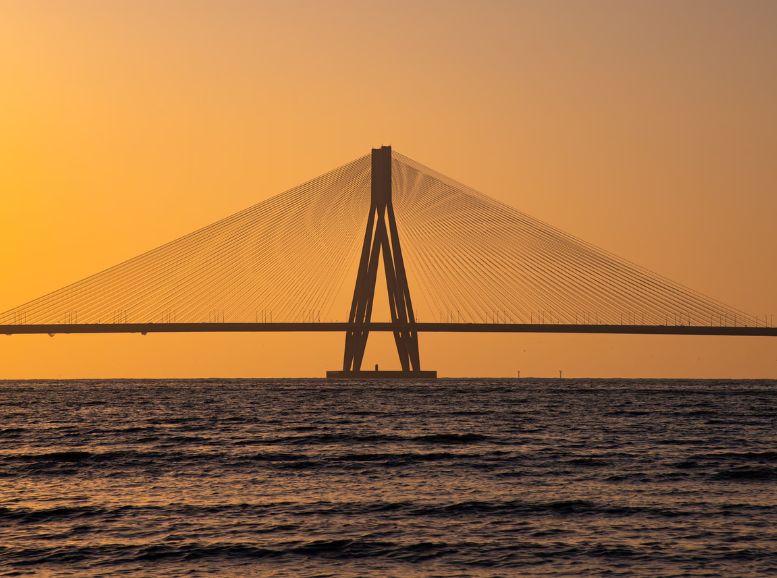

Glide across the Arabian Sea on Mumbai’s crown jewel – the Bandra-Worli Sea Link. This eight-lane cable-stayed bridge isn’t just a marvel of modern engineering; it’s a pulsating symbol of the city’s dynamism.
Imagine a 5.6-kilometer architectural ribbon gracefully connecting Bandra in the west to Worli in the south. This marvel goes beyond aesthetics. It significantly cuts travel time, easing traffic woes in the bustling metropolis.
But the true magic unfolds as you traverse the bridge. Breathtaking panoramic views of Mumbai’s ever-evolving skyline and the endless coastline erupt before your eyes. The experience is especially captivating at night, when the bridge transforms into a dazzling necklace of light, shimmering against the inky canvas of the sea.
Crawford Market, Mumbai:
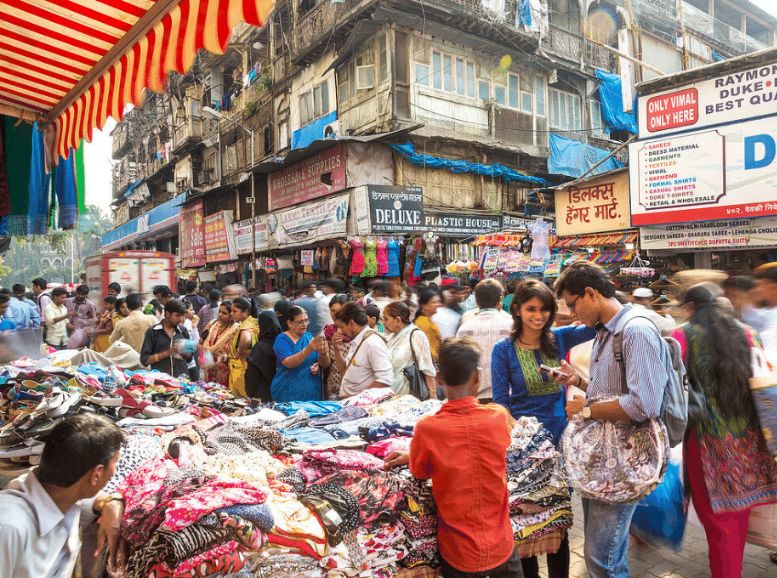

Crawford Market, Mumbai’s vibrant labyrinth of bargains and discoveries. Officially named Mahatma Jyotiba Phule Mandai, this landmark isn’t just a market; it’s a full-fledged assault on the senses in the most delightful way. Established in 1869, the market itself is a historical gem. Imagine a majestic building, a fusion of Norman and Flemish architecture, with towering arches and intricate details whispering tales of a bygone era.
Step inside and prepare to be dazzled. The air crackles with the energy of enthusiastic bargaining, friendly shopkeepers, and the excited chatter of a melting pot of locals and tourists. Fresh produce takes center stage – mountains of colorful fruits, glistening vegetables, and fragrant flowers overflowing from stalls, a feast for the eyes and a promise of delicious meals to come.
Mahalaxmi Dhobi Ghat:
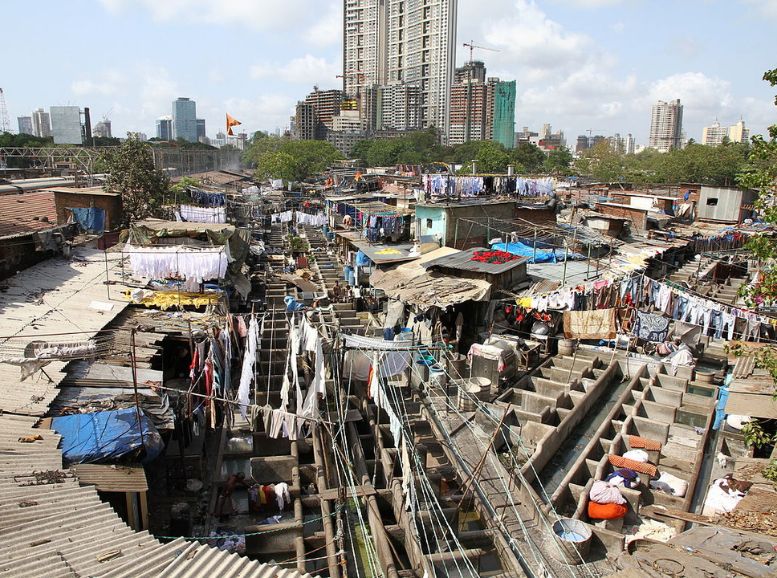

Mumbai’s beating heart of tradition and industry – the Mahalaxmi Dhobi Ghat. Forget high-tech machines; this open-air laundromat, a stone’s throw from the Mahalaxmi railway station, pulsates with the rhythm of a bygone era. As the world’s largest outdoor laundry, it’s a captivating spectacle where generations of dhobis (washermen) have carried on their trade since 1890.
Imagine rows upon rows of concrete wash pens, each a testament to the time-tested techniques. The air thrums with the rhythmic beating of laundry against stone, a symphony of industry that’s distinctly Mumbai. Look around, and a sea of colorful clothes hanging to dry unfolds before you – a captivating scene both unique and functional.
Local Experiences:
Street Food Adventures:
- Devour Mumbai’s iconic street food. From the humble vada pav to the rich and spicy pav bhaji, Mumbai’s street food scene is a must-try. Don’t miss the tangy bhel puri and the pani puri, exploding with flavor.
- Pro Tip: Head to Mohammad Ali Road during Ramadan for a truly unforgettable feast. This bustling street transforms into a paradise for foodies. Explore Mumbai’s diverse culinary landscape at Khau Gallis (Eat Streets) in neighborhoods like Zaveri Bazaar, Ghatkopar, and Tardeo.
Bollywood Tours:
- Take a peek behind the magic curtain with a guided tour of Film City in Goregaon, where countless Bollywood blockbusters have been filmed.
- Spot iconic shooting locations around the city. Bollywood fans won’t want to miss Bandstand Promenade and Juhu Beach. If you’re lucky, you might even score tickets to a live TV show or movie shooting.
Markets and Shopping:
- Lose yourself in the vibrant chaos of Crawford Market, a treasure trove of fresh produce, spices, flowers, and unique knick-knacks.
- Indulge in retail therapy at Colaba Causeway and Linking Road. From trendy fashion and accessories to quirky souvenirs, these streets have something for everyone. Discover the artistic heart of Mumbai at the Kala Ghoda Art Precinct, with art galleries, cafes, and boutiques.
Cultural Experiences:
- Immerse yourself in Marathi culture with a traditional play at Prithvi Theatre, a platform for renowned playwrights and actors.
- Experience the beauty of Indian classical music at a concert at the National Centre for the Performing Arts (NCPA), a premier cultural institution.
- Dive into Mumbai’s rich history at heritage sites like the Chhatrapati Shivaji Maharaj Vastu Sangrahalaya, a grand museum housing a vast collection of Indian art and artifacts, and the Dr. Bhau Daji Lad Museum, showcasing the city’s social and cultural history.
Relax and Unwind:
- Take a leisurely stroll along Marine Drive, also known as the “Queen’s Necklace,” offering stunning views of the Arabian Sea.
- Soak up the sun and people-watch at Juhu Beach or Versova Beach. Don’t forget to grab some local snacks from the beach vendors!
- Explore the ancient Elephanta Caves on Elephanta Island, a UNESCO World Heritage Site. Take a ferry ride from the Gateway of India to reach the island.
Travel tips:
- Winter (Nov-Feb): Pack light woolens for comfortable evenings as temperatures range from 15°C to 25°C (59°F to 77°F).
- Monsoon (June-Sep): Waterproof clothing and an umbrella are essential for the heavy rains. Be prepared for occasional flooding in some areas.
- Summer (Mar-May): Opt for light, breathable fabrics to combat the heat and humidity. Don’t forget sunscreen and a hat for sun protection.
Local Transportation:
- Trains and Metro: Mumbai’s local trains and metro offer a fast and efficient way to navigate the city, but avoid rush hour for comfort.
- Auto-rickshaws and Taxis: Convenient for short distances, especially with ride-hailing apps like Uber and Ola for ease and booking.
- BEST Buses: BEST buses provide an affordable option with extensive routes covering most of the city.
Staying Healthy and Respectful in Mumbai:
- Hydration: Always carry a water bottle, especially during summers and outdoor activities.
- Street Food: Indulge in the vibrant street food scene, but choose stalls with high turnover to ensure freshness.
- Medical Care: Research the locations of nearby hospitals and pharmacies for emergencies.
Cultural Etiquette:
- Modesty: Dress modestly when visiting religious sites like temples and mosques.
- Footwear: Remove your shoes before entering homes, temples, and some shops.
Conclusion
Unveiling Mumbai’s captivating soul – a city that throbs with a vibrant blend of culture, history, and electrifying energy. Explore iconic landmarks like the Gateway of India and Marine Drive, tantalize your taste buds with mouthwatering street food, or get lost in the magic of Bollywood. Navigate diverse neighborhoods, relish culinary delights, and embrace the city’s dynamic spirit. With Xplro.com as your companion, uncover the true essence of this cosmopolitan metropolis. Plan your Mumbai adventure, embrace the warmth and hospitality, and let the city’s vibrant stories and sights leave a lasting impression. Remember, pack for the weather, respect local customs, and bring your adventurous spirit – Mumbai awaits!
FAQs
What is Mumbai known for?
- Mumbai is renowned as the financial capital of India and the hub of Bollywood, India’s film industry. It blends diverse cultures, iconic landmarks like the Gateway of India, and a vibrant street food scene.
What is the bsuggested time to visit Mumbai?
- The ideal time to visit Mumbai is from November to February, during the winter season when the weather is pleasant and suitable for exploring the city’s attractions.
How can I get to Mumbai?
- Mumbai is well-connected by air, rail, and road. Chhatrapati Shivaji Maharaj International Airport serves domestic and international flights, and multiple railway stations connect Mumbai to major cities across India.
What are the must-visit attractions in Mumbai?
- Key attractions include the Gateway of India, Marine Drive, Elephanta Caves, Juhu Beach, Siddhivinayak Temple, and bustling markets like Colaba Causeway and Crawford Market.
What are some famous dishes to try in Mumbai?
- Popular dishes include vada pav (spicy potato fritters in a bun), pav bhaji (mashed vegetable curry with buttered bread), bhel puri (savory snack with puffed rice and chutneys), and Mumbai-style street sandwiches.
Is Mumbai safe for tourists?
- Mumbai is generally safe for tourists, but it’s advisable to take usual precautions against pickpocketing and be cautious in crowded areas. Stay in well-lit and populated areas at night.
What are the best shopping places in Mumbai?
- Top shopping spots include Colaba Causeway for fashion and souvenirs, Linking Road for street shopping, and Crawford Market for fresh produce, spices, and household items.
How is the nightlife in Mumbai?
- Mumbai offers a lively nightlife scene with bars, clubs, and lounges in areas like Lower Parel, Bandra, and Colaba. Many venues feature live music, DJ sets, and diverse cuisine options.
What are the transportation options in Mumbai?
- Local trains, buses (BEST), auto-rickshaws, taxis, and ride-hailing services like Uber and Ola are common modes of transport. The Mumbai Metro also connects various parts of the city.
What are some cultural experiences to explore in Mumbai?
- Cultural experiences include watching a Bollywood movie screening, attending a play at Prithvi Theatre, exploring art galleries in Kala Ghoda, and visiting religious sites like Haji Ali Dargah and Mahalaxmi Temple.
Are there any day trips from Mumbai?
- Yes, popular day trips include visiting Elephanta Caves by ferry, exploring hill stations like Lonavala and Matheran, and visiting Alibaug for its beaches and historic forts.
What should I know about local customs and etiquette in Mumbai?
- Respect local customs by dressing modestly at religious sites, removing shoes before entering homes or temples, and greeting with a respectful “Namaste”. Bargain politely in markets and be mindful of cultural sensitivities.
